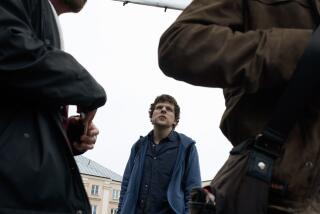A second look at Steven Spielbergâs â1941â
Steven Spielberg was riding high in 1979. His previous two films, 1975âs âJawsâ and 1977âs âClose Encounters of the Third Kind,â were groundbreaking blockbusters that earned a total of five Oscars.
Hopes were high for his first comedy, â1941,â which boasted a cast that included âSaturday Night Liveâ stars John Belushi and Dan Aykroyd, plus film stars Nancy Allen, Tim Matheson, Ned Beatty, Toshiro Mifune, Christopher Lee, Slim Pickens, Robert Stack, Warren Oates, Samuel Fuller and John Candy.
The comedy, which revolved around a panic that ensued in Los Angeles after the Japanese attack on Pearl Harbor in 1941, was written by up-and-coming young screenwriters Bob Gale and Robert Zemeckis. John Milius, who originally brought the project to Spielberg, was an executive producer. The film even included a clever parody of the opening of âJawsâ featuring the same actress, Susan Backlinie.
But as the Universal and Columbia Pictures co-production grew and grew, so did the costs. âIt was sort of a work in progress, an expensive work in progress,â recalled producer Buzz Feitshans.
When the film finally opened that December, critics were far from kind.
âMy favorite was Pauline Kael, who said it was like having your head stuck in a pinball machine for two hours,â noted Gale.
Spielberg, added Gale, âwas a little bit out of his element with this movie.â
âHeâs got a great sense of humor, and he pulled off some really funny bits in the film,â Gale recalled. âHe is not the best comedy director.â
But time has been kind to â1941â and the film has developed a strong cult following since an extended version was first shown on ABC in 1983. That edition restores a lot of the exposition and character development in the first half of the comedy that had been trimmed from the two-hour release version.
The extended cut has been available on home video and DVD since the 1990s. A restoration for the movieâs Blu-ray release last year, including a new sound mix and a restored score, impressed Spielberg enough that the filmmaker asked that it be made available for exhibition.
On March 22, Gale, Feitshans, Matheson and Allen, among others, will be reuniting for a screening of this restored extended edition at the American Cinemathequeâs Egyptian Theatre. Moderating the evening will be Mike Matessino, a soundtrack producer-preservationist who organized the event. Matessino restored John Williamsâ score for a two-disc soundtrack CD.
Though critics didnât think â1941â was much fun, the cast had a great time.
âI have to tell you it was more fun than should be allowed on a movie,â said Allen. âI mean really such a blast every day. â
Spielberg shot and reshot scenes endlessly, so the schedule âreally went out the window,â Allen noted. âWe were all hired for 14 weeks, and we were on the film for six months. If a movie had six months to shoot today, it would be normal, but then it was scandalous. âWhat are they doing over there?â It was such a huge piece.â
The set was mobbed. Matheson recalled that âthere were hundreds of extras and everybody wanted to come to visit.â
âSteven was at the early peak of his career, and here he was making a comedy,â Matheson added. âIt was so much fun to work with Steven. He was very composed and never seemed harried.â
Needless to say, it was a remarkable experience for the screenwriters. âThe whole idea that we wrote a scene for Toshiro Mifune, Christopher Lee and Slim Pickens was totally surreal,â said Gale.
Mifune, who had starred in such classic Akira Kurosawa films as âSeven Samurai,â was âthe most exacting trained actor I have ever seen work. He could hit his marks like he was a machine.â
The actor took his role as a submarine commander seriously. âHe was really annoyed that the extras and the bit players who were the Japanese crew were not behaving like a Japanese crew should behave,â Gale recalled. âSo with the help of a translator, he took on the character and whipped those guys into shape.â
But as the production went on, Spielberg kept adding big sight gags at âthe expense of the character stuff,â said Gale. âHe kept shooting more stuff with John Belushi. The studio wanted to push John Belushi and Dan Aykroyd.â
Itâs also important to remember that â1941â was made long before computer-generated images.
âEverything you look at in the movie, from the beginning to the end, whether it be a person or an object, is actually physically in front of a camera,â said Matessino. âThere is nothing optically added at all.â
Spielberg, said Feitshans, didnât want to do another visual effects movie.
âThat made us try to do a lot of things that maybe could have been done with visual effects and try to do it live,â he said. âMany things were sort of groundbreaking in the miniatures area. Many things that we did had never been done before.â
The production was a little daunting â even for Spielberg â because âmany of the things we did, we only had one chance to do it,â said Feitshans. âWhen we pushed that house off the cliff, there was no âWell, that didnât look quite right, letâs do it again.â Or when the Ferris wheel rolls off the pier, it was a one-time thing.â
------------
â1941â
Where: American Cinemathequeâs Egyptian Theatre,
6712 Hollywood Blvd., Hollywood
When: 5 p.m. Sunday
Admission: $7-$11
Info: https://www.americancinematheque.com
More to Read
Only good movies
Get the Indie Focus newsletter, Mark Olsen's weekly guide to the world of cinema.
You may occasionally receive promotional content from the Los Angeles Times.











